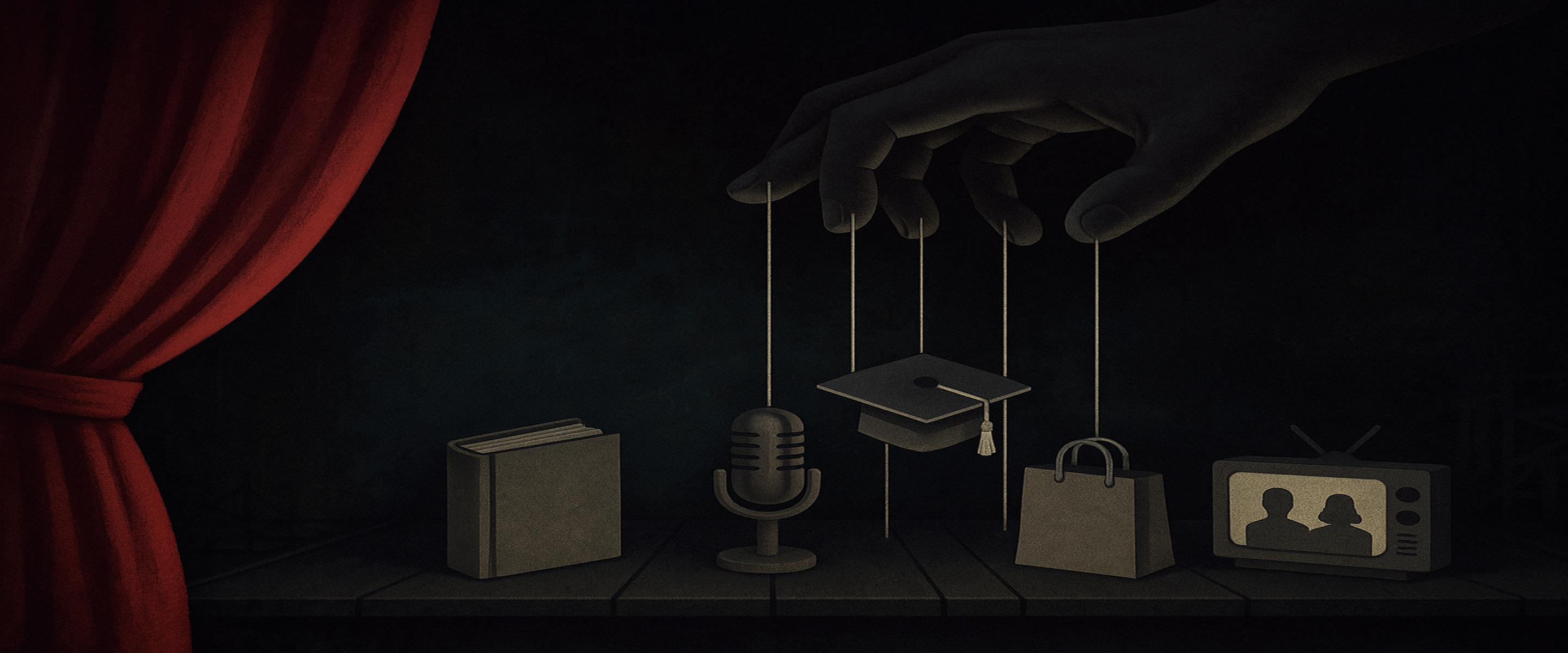
Misleading by Design
Expose the Spin. Question the Narrative. Follow the Evidence.

Expose the Spin. Question the Narrative. Follow the Evidence.

Misleading by Design is a Branching Plot Books project that exposes the scams, schemes, and manipulations intended to deceive authors and consumers. These include predatory publishing deals, inflated marketing claims, and influencer partnerships that benefit no one but the promoters. This project pulls back the curtain on an industry that thrives on illusion.
But the deception isn't limited to publishing.
It extends into the institutions we trust, the media we consume, the food we eat, the products we buy, and the educational content we're told to believe. From biased headlines to politically shaped coursework, many of the messages we accept as truth are carefully crafted to serve someone else's agenda.
Misleading by Design challenges those messages, reveals the systems behind them, and invites the public to investigate on their own.
I don’t accept surface-level explanations or press release versions of the truth. When institutions manipulate information, they rely on the public’s willingness to skim, trust, and move on. Misleading by Design demands the opposite. I take the time to dissect the language, trace the money, question the credentials, and test the claims. Whether it’s a scam targeting authors or a university course pushing political spin, I ask who benefits, who pays, and what gets buried. The goal isn't to provoke outrage but to sharpen awareness. The goal is to expose the structure behind the message, not to entertain, but to inform.
Publishing today is a modern gold rush. Authors are chasing success, but the ones making money are the companies selling the dream. Some have built entire systems designed to extract as much money as possible from writers. They package fake awards, paid interviews, and meaningless exposure into overpriced bundles. They don't help authors grow an audience. They sell the illusion of recognition.
Many of these companies push the idea of visibility, influence, and book sales, yet their own platforms have little reach. Their followers are usually other authors, not readers. What you end up with is a closed loop where everyone is trying to sell, but no one is buying. It becomes a flea market of writers, each one promoting their work to other sellers. The result is noise, not visibility.
These operations survive by pushing volume. They don't care if your book sells. They care if you pay. Their success isn't tied to your results. It's tied to how many authors they can convince to sign up. Most of the praise they promote comes from clients trying to justify what they spent, not from actual outcomes.
Misleading by Design exposes these setups. If a company makes its money from authors instead of readers, it needs to be investigated.


Restaurants and food companies know how to sell a feeling. Their ads show flawless meals, glowing lighting, and close-up shots of food that looks handcrafted and generous. But once the food hits the table or comes out of the box, reality sets in. The portions are smaller. The presentation is sloppy. The ingredients look nothing like what was promised.
This section of Misleading by Design investigates the gap between what we're shown and what we actually get. We compare menu photos, commercials, and packaging with real-world results. That includes restaurant meals, grocery store products, frozen dinners, and even “health” foods that rely on buzzwords instead of quality.
We're not here to critique taste or preferences. We're focused on marketing deception, specifically, how visuals are used to raise expectations that the product rarely meets. If the food on the box is unrecognizable once opened, that's a design choice, not an accident.
American Military University (AMU) claims to prepare students for careers in homeland defense, intelligence, and counter-terrorism. In reality, it pushes a one-sided political agenda. Conservative views are treated as dangerous. Left-wing extremism is ignored, excused, or justified. Course after course follows the same pattern: White Americans and conservatives are portrayed as the primary threat, while left-wing extremists and other groups are downplayed, excused, or left out entirely.
I know this because I’m a student in the program. I’ve seen it firsthand. This isn’t education. It’s indoctrination. And it’s not limited to a few senior staff members or professors; it runs through the entire program.
Misleading by Design documents how AMU uses its curriculum not to stop terrorism, but to normalize it, so long as it comes from the left. These courses don’t train students to defend against extremism. They teach students HOW to adopt it. The program reads less like counter-terrorism and more like a manual for becoming a left-wing radical. White Americans and conservatives are cast as the enemy. Everyone else gets a pass.


Not every scam fits into a neat category. Not every lie comes from a textbook or a press release. Misleading by Design is built to follow patterns, not trends. If something is deceptive, manipulative, or designed to mislead the public, it belongs here.
That includes industries, products, influencers, institutions, and anyone else using trust as a weapon. Whether it’s a corporate claim, a viral agenda, or a public figure hiding behind false credibility, it gets the same treatment, no soft language, no free passes.
I investigate what I believe the public needs to see, even if no one else is talking about it. Especially if no one else is talking about it.
For more on the scams, deception, and manipulation behind author services, media, education, and more, visit the Misleading by Design Briefing Room. There, you’ll find investigations that expose the system, challenge the spin, and ask the questions others avoid.